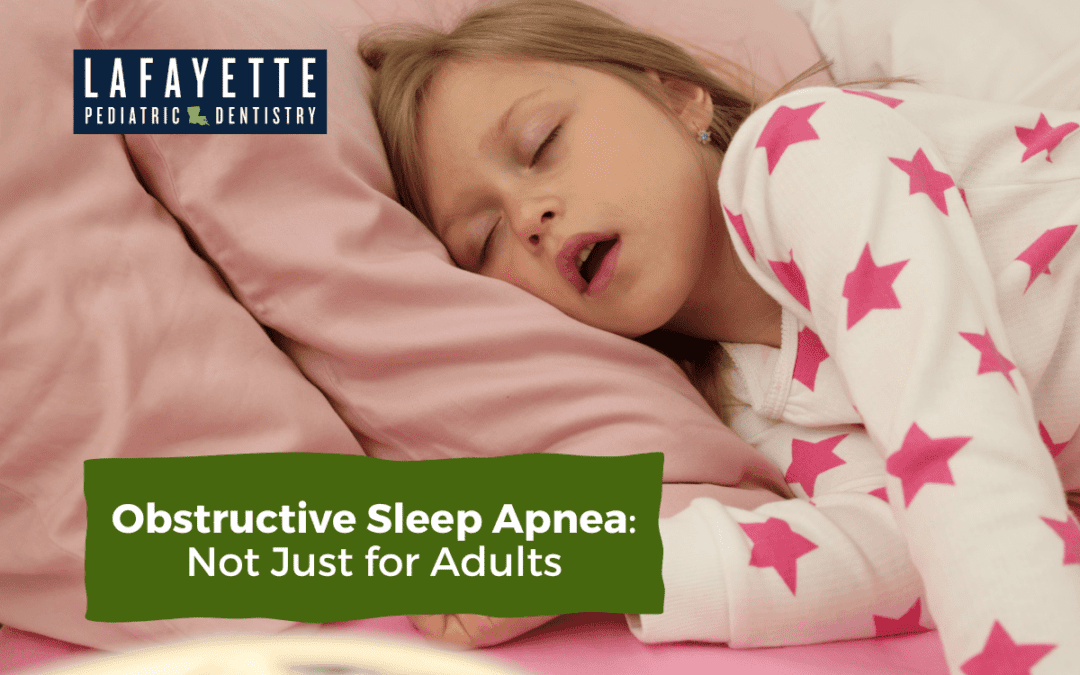Did you know obstructive sleep apnea doesn’t just affect adults? Kids can have it too, but it often looks different in children.
In children, this disorder is called sleep disordered breathing, since apnea itself often doesn’t occur, but symptoms of airway obstruction and signs of potential future apnea are observed.
While adults with obstructive sleep apnea usually snore loudly, children with sleep disordered breathing may display subtler signs. These can include chronic restless sleep, mouth breathing, or even a recurrence of bedwetting.
It’s important to sleep disordered breathing in kids early on because it can affect their behavior, learning abilities, and overall health and growth.
In this article, we’ll explore the telltale signs parents should watch for and emphasize the importance of early detection. Our goal is to help you understand how to improve your child’s sleep and overall health.
What is Obstructive Sleep Apnea/Sleep Disordered Breathing?
Obstructive sleep apnea is a condition where breathing is repeatedly obstructed during sleep. It typically occurs when the airway becomes blocked, restricting normal airflow.
Common causes of a blocked airway can include enlarged tonsils, poor tongue position, or abnormal growth.
The Impact of Obstructive Sleep Apnea/Sleep Disordered Breathing on Child Development
During early childhood, 90% of brain growth occurs, with much of this development happening during deep sleep. Uninterrupted sleep is essential for memory consolidation and cognitive processing.
Sleep disordered breathing can interfere with these processes, potentially impacting a child’s problem-solving skills and overall cognitive development over time.
Poor sleep quality also leads to daytime fatigue, which affects concentration and behavior. As a result, children with obstructive sleep apnea may struggle in school, have difficulty retaining information, and/ or exhibit behavioral issues.
Common Risk Factors of Obstructive Sleep Apnea in Children
Several conditions can increase a child’s likelihood of developing obstructive sleep apnea. Here are some of the most common risk factors, though this list isn’t exhaustive:
- Enlarged Tonsils or Adenoids: When oversized, these lymphoid tissues in the throat can obstruct the airway. This is one of the most common causes of obstructive sleep apnea in children.
- Genetic Predisposition: A family history of obstructive sleep apnea (OSA) could increase a child’s risk.
- Obesity: Excess weight, particularly around the neck, can put pressure on the airway, making it more prone to collapse during sleep.
- Tongue Tie: This is a condition where the tongue is tethered too tightly to the bottom of the mouth, which can adversely affect tongue movement and position, causing the tongue to partially obstruct the airway during sleep.
- Narrow Anatomy: High, narrow palates and narrow jaws make for a very small oral cavity, which in turn can correlate with a narrow airway.
- Respiratory and Sinus Issues: Chronic allergies and asthma could increase the risk of developing obstructive sleep apnea symptoms.
Read Also: Tongue-Tie in Infants and Young Children: Signs to Look Out For
Spotting Obstructive Sleep Apnea/Sleep Disordered Breathing Symptoms in Children
After your child has fallen asleep, look out for consistent presence of any of the following:
- Loud or heavy, raspy breathing/Snoring
- Chronic mouth breathing
- Breathing pauses during sleep
- Restless sleep/ constant tossing and turning
- Chronic allergic puffiness under eyes
- Frequent ear infections
- Chronically enlarged tonsils and/or adenoids
- Behavioral problems
- Excessive daytime sleepiness
- Difficulty concentrating
- Teeth grinding (bruxism)
- Sleeping with hyperextended neck (head always “thrown” backwards)
- Recurrence of bedwetting
Not all children will show every sign, and the severity can vary. If you notice several of these symptoms persisting over time, it’s worth discussing with your pediatrician or pediatric dentist. Early detection of sleep disordered breathing can lead to more effective treatment and prevent long-term issues.
Why Sleep Disordered Breathing in Children Often Goes Unnoticed
Misconceptions
Many people think sleep apnea only affects adults. As we mentioned earlier, the signs of obstructive sleep apnea in children are different from those in adults. Because the symptoms in children aren’t always obvious, they can be harder to spot.
Tricky Symptoms
Signs of suboptimal air exchange in kids often presents like other issues. Hyperactivity might seem like ADHD. Daytime fatigue can look like daydreaming or laziness. Learning problems might be blamed on other causes. Tooth grinding can be attributed to stress. Bedwetting could be seen as a separate issue. These mix-ups can lead to wrong or missed diagnoses.
What’s Next?
We’ve learned that sleep apnea isn’t just for adults. The good news is that spotting it early can really help your child.
If you’ve noticed any of the signs we discussed above or if you’re just concerned about your child’s sleep, your pediatrician or pediatric dentist can help. They’re trained to spot sleep issues in kids and can guide you on the next steps.
For families in Lafayette, Broussard, Youngsville, Breaux Bridge, and the surrounding areas, our pediatric dental team at Lafayette Pediatric Dentistry is here to help. We can check for signs of sleep apnea during your child’s dental visit.
If we spot something, we’ll work with you to figure out the best treatment plan for your child. Request an appointment with us today!
